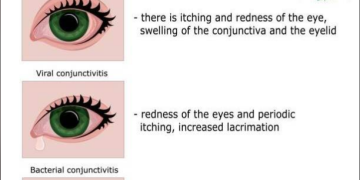A comprehensive strategy is necessary for successful cancer therapy, which combines several techniques such as radiation, surgeries, chemotherapy, gene editing therapy and immunotherapy. To construct such combinations, cell-intrinsic and cell-extrinsic pathways underpinning tumor formation, metastasis, and therapeutic responsiveness should be highly understandable. The most widely utilized in vivo tumor models in cancer research are mice based on xenografting human cancer cell lines or allografting mouse tumor cells and employed for preclinical drug testing. For instance, xenotransplantation research provides light on the processes underlying colorectal cancer(CRC) resistance to vemurafenib.

A clinical trial treating CRC patients with a combination medication that targets both BRAF V600E and EGFR was started because of this study’s findings,demonstrating the value of xenotransplantation models in developing cutting-edge combinatorial therapeutic approaches. Additionally, these models demonstrated that breast cancer cells are found near blood arteries, suggesting that this area may act as a habitat for controlling the latency of scattered cancer cells.
The earlier problems encountered in malignancy research
The emergence of drug resistance is one of the main issues in surviving cancer patients. Drug resistance brought on by de novo mutations or the expansion of previously treated, therapy-resistant clones within heterogeneous malignancies always follows monotherapy with targeted anti-cancer drugs or chemotherapeutics. Additionally, even after seemingly effective therapies, a tiny percentage of drug-resistant tumor cells might persist, lay dormant for long periods, and return to cause a disease that can be morphologically distinct from the initial tumor.

Another significant obstacle is a metastatic illness, which causes more than 90% of cancer-related fatalities. Cancer immunotherapy, which uses the patient’s immune system to combat the disease, has made promising strides. Nevertheless, even though long-lasting responses are occasionally seen, a significant number of cancer patients do not see any therapeutic improvement.
Standard mouse models frequently employed in cancer research
Historically, syngeneic and xenografted tumors were directly injected or orthotopically into immunocompetent or immunodeficient animals. Transgenic mice, in which oncogenes can be expressed either over-expressing or partly and tumor-suppressor genes can be silenced using common techniques like retroviral infection, microinjection of DNA constructs, and the so-called “gene-targeted transgene” approach, are other kinds of mice used in cancer research.
These conventional transgenic models have played a crucial role in research on tumorigenesis and the emergence of therapeutic resistance.

The clustered regularly interspaced short palindromic repeats (CRISPR)-based genome editing techniques in the mouse model have a quick impact on the creation of more efficient methods for studying human cancers. Transgenic models based on CRISPR/Cas9 can create a wide range of mutations seen in human tumors. Recently, humanized mice xenograft models were created to better simulate tumor heterogeneity, the tumor microenvironment, and crosstalk between the tumor and immune cells. These models accept patient-derived xenografts and CD34+ cells, making them incredible models for experimental cancer treatments, particularly immunotherapies.
Applications of transgenic mouse models in cancer research
The term “animal models” refers to the experimental animal devices and associated materials
used in medical research to replicate the human body. Cancer ranks second in terms of morbidity and death only to cardiovascular disease, making it a priority for scientific study. The strategies for cancer animal models are diversifying as research progresses, including chemical induction, xenotransplantation, gene programming, and others.
Patient-derived xenotransplantation (PDX) models are able to preserve the microenvironment of the underlying tumor and the fundamental properties of cells have made it a research priority. Animal models can be employed for gene therapy research as well as the biochemical and physiological mechanisms behind the onset and progression of cancer in living organisms. The good quality experimental material of animals is the key feature for better result-oriented studies.
Cyagen is supplying the genetically engineered mouse applicable in various fields of research, especially in oncological studies.




































Discussion about this post